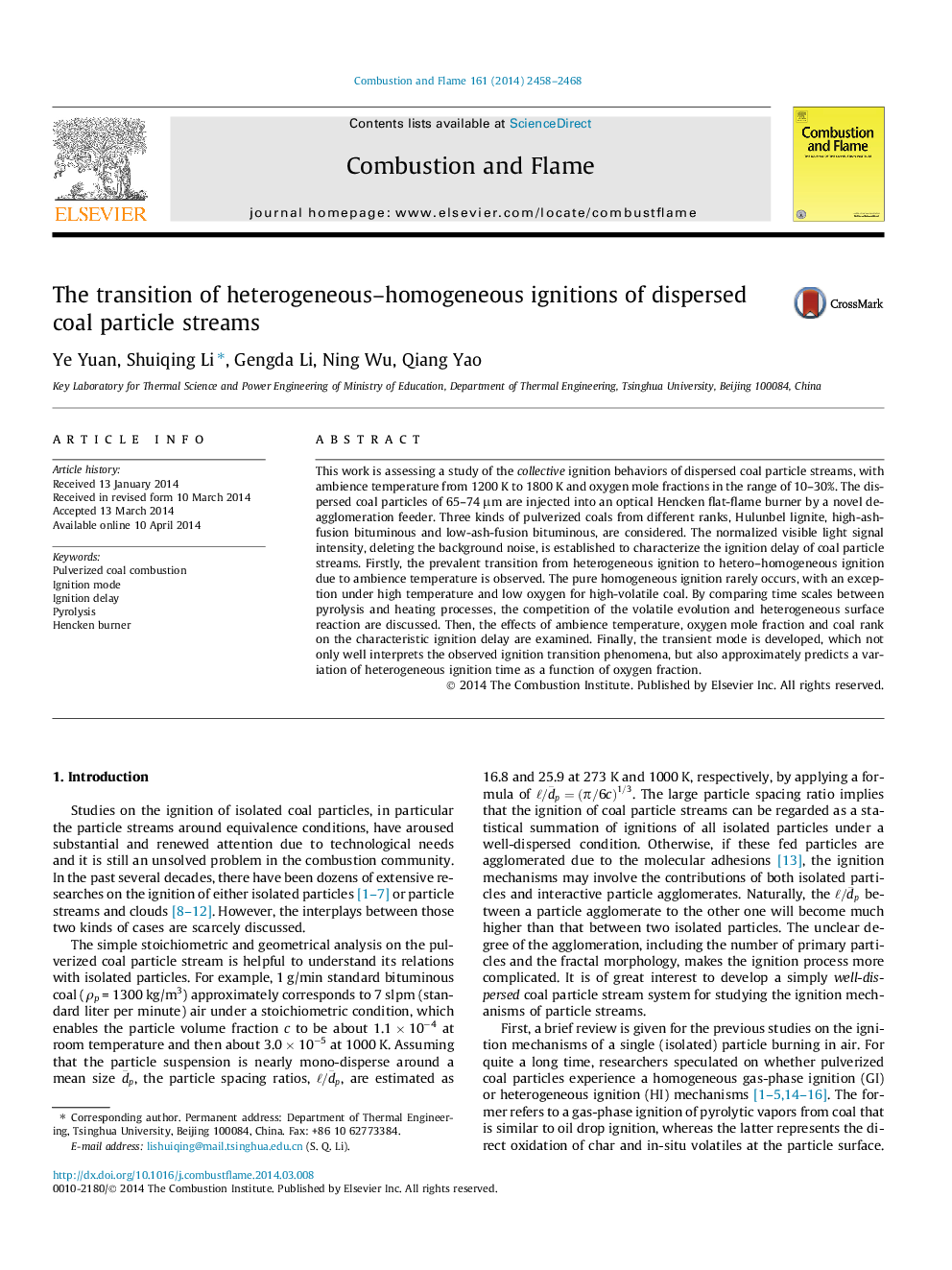| Article ID | Journal | Published Year | Pages | File Type |
|---|---|---|---|---|
| 168567 | Combustion and Flame | 2014 | 11 Pages |
This work is assessing a study of the collective ignition behaviors of dispersed coal particle streams, with ambience temperature from 1200 K to 1800 K and oxygen mole fractions in the range of 10–30%. The dispersed coal particles of 65–74 μm are injected into an optical Hencken flat-flame burner by a novel de-agglomeration feeder. Three kinds of pulverized coals from different ranks, Hulunbel lignite, high-ash-fusion bituminous and low-ash-fusion bituminous, are considered. The normalized visible light signal intensity, deleting the background noise, is established to characterize the ignition delay of coal particle streams. Firstly, the prevalent transition from heterogeneous ignition to hetero–homogeneous ignition due to ambience temperature is observed. The pure homogeneous ignition rarely occurs, with an exception under high temperature and low oxygen for high-volatile coal. By comparing time scales between pyrolysis and heating processes, the competition of the volatile evolution and heterogeneous surface reaction are discussed. Then, the effects of ambience temperature, oxygen mole fraction and coal rank on the characteristic ignition delay are examined. Finally, the transient mode is developed, which not only well interprets the observed ignition transition phenomena, but also approximately predicts a variation of heterogeneous ignition time as a function of oxygen fraction.
